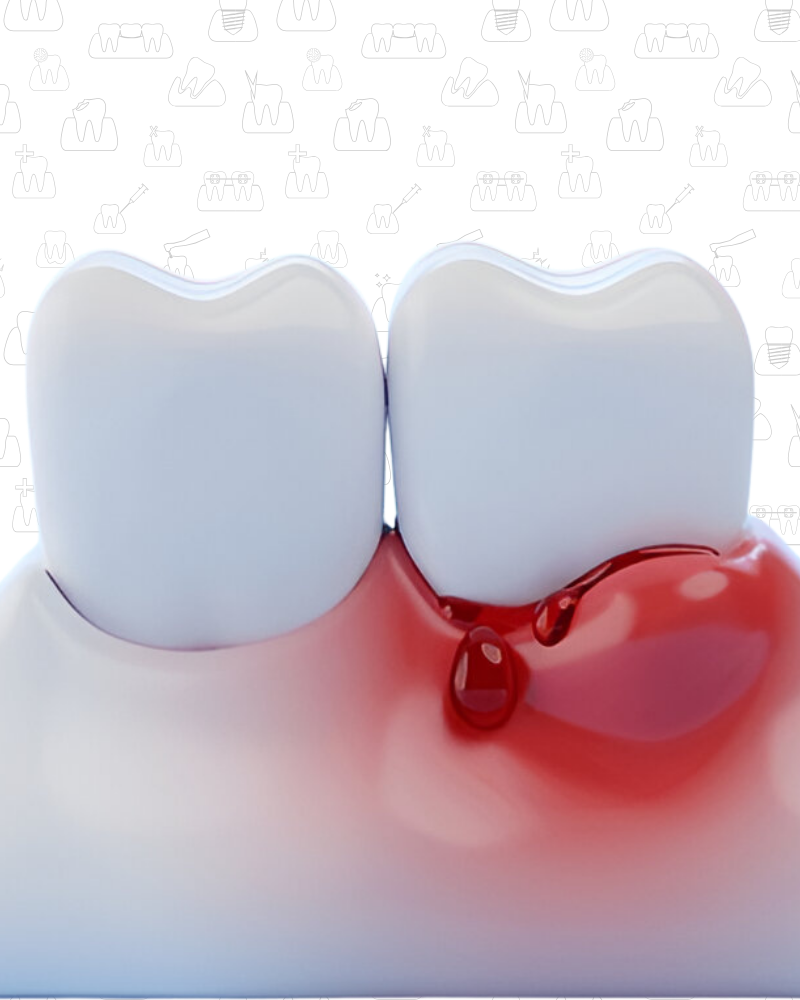Gum Disease

Gum Disease (Periodontics)
Best Gum disease treatment in vijayawada. Keeping gums healthy is as important as keeping your teeth healthy, as they work together to sustain our oral health. There are two stages of gum disease. The first stage of gum disease is called Gingivitis, and it entails swelling of gums, bleeding, and redness caused by dental plaque build-up along the gum line. The second stage is called Periodontitis, which is the advanced stage of Gingivitis accompanied by bone loss, when the gum line recedes and creates a pocket in between the tooth and the gum. The bacteria in the pocket would cause pain, redness, swelling, bleeding, bad breath, and bone loss, which further leads to loss of teeth. Depending upon the severity of gum disease, scaling/root planning/Flap surgeries/regenerative therapy might be required.
Signs of gum disease
- Gums that bleed when you brush
- Gums that look red and inflamed
- Bad breath and/or a nasty taste in your mouth
- Gaps between your teeth and gums
- Loose teeth
- Sensitive teeth
- Pain when chewing
- Gum abscesses
Gum disease is usually caused by a build-up of plaque, which contains bacteria that irritate your gums. For most patients, the early signs of gum disease can be treated by improving their oral hygiene routine and ensuring plaque is effectively removed daily by brushing and flossing. When plaque is left on the teeth it will eventually turn into tartar, also known as calculus. If this does happen, you’ll need to visit your dentist so it can be removed using specialist tools.
Treatments We Do



